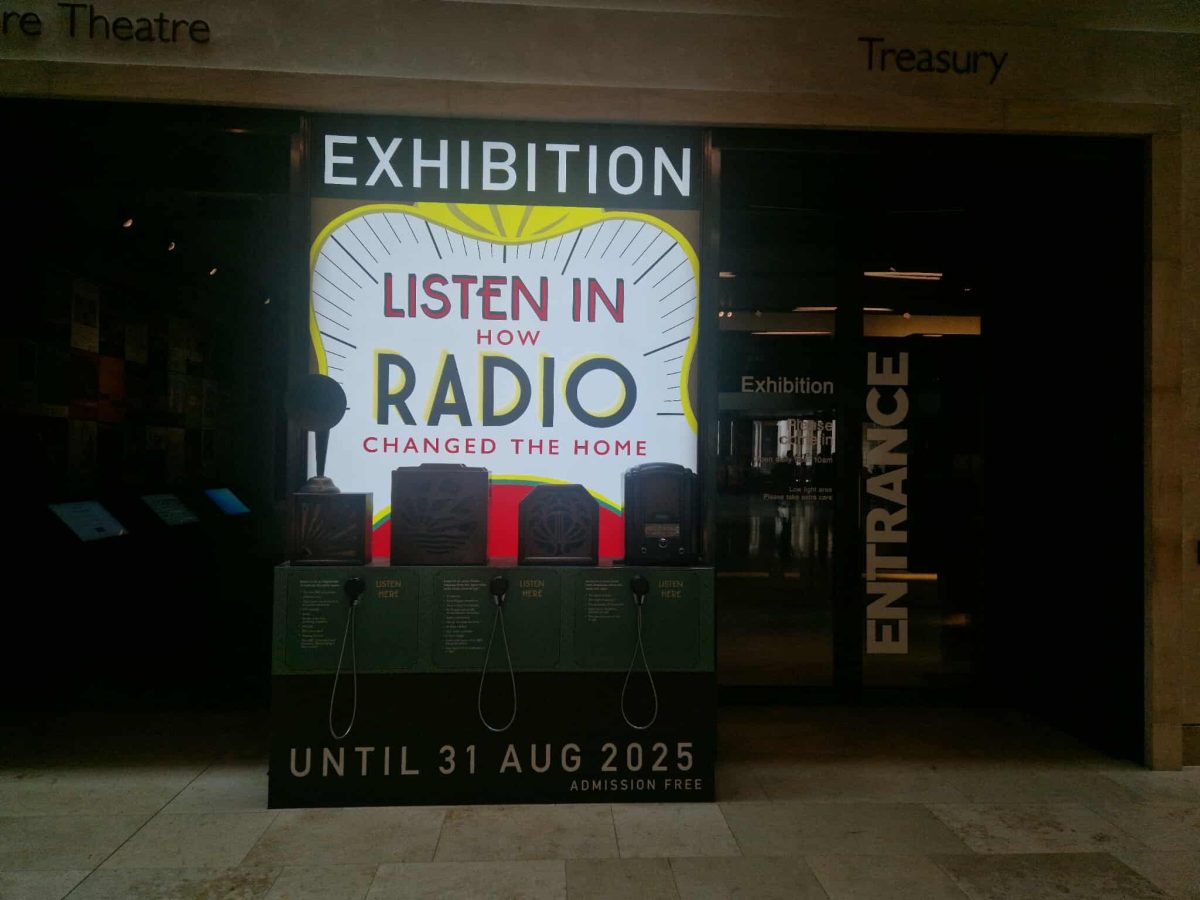“Ladies and gentlemen, we interrupt our program of dance music to bring you a special bulletin from the Intercontinental Radio News. At 20 minutes before 8, central time, Professor Farrell of the Mount Jennings Observatory, Chicago, Illinois, reported observing several explosions of incandescent gas, occurring at regular intervals on the planet Mars.”
These were the lines that opened Orson Welles’ radio adaptation of The War of the Worlds. He decided to produce the programme in a journalistic style, with ‘breaking news’ interruptions, live reporting, and eye-witness testimonies. Those who had, unfortunately for them, tuned in too late to hear the disclaimer announcement at the beginning of the show, descended into panic, believing they were listening to the live report of an alien invasion. Phone lines became jammed as thousands of fearful citizens phoned into newspapers, and even the police. Although part-apocryphal, this story still stands as a testament to radio’s power and influence, as demonstrated by the Bodleian’s current exhibition Listen In: How the Radio Changed the Home in the Weston Library.
Throughout this installation, curator Beaty Rubens takes a different approach to the radio, attempting to examine its impact on listeners, rather than examining the story once more through the lens of broadcasters. The Bodleian’s vast resources, including excerpts from contemporary magazines, books, and even cartoons, are employed to explore how radio impacted family life during the interwar years, and to illuminate the opinions of those who lived through its introduction.
One of the major points spotlighted by the resulting exhibition is the extent to which the radio enriched the lives of women, who, stuck in strict ideals of domesticity, often felt lonely and isolated from the world outside. The radio is an immediate, intimate medium of communication, and many writers since have revelled in this effect, producing moving, poignant narratives. Dylan Thomas made particular use of this effect in his audio drama Under Milk Wood, a work which draws the listener into the dreams of the inhabitants of Llareggub, a small fictional Welsh village. Through different voices Thomas highlights the universal themes of his play: nostalgia, community, and love.
More recently, Susann Maria Hempel’s radio play Auf der Suche nach den verlorenen Seelenatomen (In Search of the Lost Soul Atoms) recited, in song, her record of conversations with a former political prisoner of the German Democratic Republic to create an intense emotional charge. It is, perhaps, her full use of radio’s capacity to bring an immediacy to the performance that won her play the ‘Radio Play of the Year Award’ from the German Academy of the Performing Arts.
It is not only radio’s intimacy which has attracted writers, but also the very opposite: its potential as an instrument of mass media. In 1939 there were nearly 9 million radio licence-holders in Britain, making it an attractive prospect for writers, such as T.S. Eliot, who believed in the ideal of a cultural community. Eliot first appeared on the radio in the late 1920s with a series of talks focusing on English poetry. He subsequently delivered over 82 programmes in the course of the next 35 years, making cultural education accessible to millions. The influence of this medium on his own poetry is visible throughout ‘The Waste Land’, whose polyphonic structure lent itself perfectly to the radio format when broadcasted in 1946. This advocacy for the radio as a tool for cultural enrichment rather undermines critics, such as John Carey, who accuse Eliot and other modernists of elitism.
Clearly, and as the Bodleian Libraries’ exhibit shows, the rise of the radio opened people – particularly women – up to literature and culture on a greater scale and to a greater extent than had ever been done before. This legacy continues in programmes such as Radio 4’s Book Club, A Good Read and Take Four Books: these shows give listeners the opportunity to explore the lives of their favourite writers, hear from authors about the writing process, and engage in lively discussion about interesting books.
It is, however, not all roses and sunshine for the radio play. Although the BBC recently introduced a new, 90-minute monthly slot on Radio 4 for audio dramas, this was only achieved after a lengthy campaign against their decision to remove all audio drama from Radio 3. In this age of television and TikTok, it is hard for the radio to compete, and yet there’s no other medium that allows people who are visually impaired, have dyslexia, or trouble focusing over long periods, to access literature. No other medium which allows you to commute to work, do the washing up, or take the dog for a walk, whilst immersing yourself in a literary creation.
Radio also spawned a whole world of audio narration and literary discussion. From Stephen Fry’s narration of Harry Potter to The Book Review, the popularity of audiobooks and podcasts has skyrocketed in the past few years, and it owes this success to the radio. Listen In may highlight radio’s impact on home life, but that on the literary world is clearly also ubiquitous. And the exhibition’s heavy use of written material in its examination of contemporary attitudes demonstrates the reciprocal importance of literature in promoting radio.
It seems almost as if we’ve gone full circle. We moved from medieval storytellers and court jesters, to manuscripts and the novel, only to come back round once again to oral narration. From Book at Bedtime to The Archers, we seem hardwired to love listening in: these two programmes alone reach over six million listeners weekly. After all, there’s something personal about an audio drama. It is as if the narrator is speaking only to you, as if they’ve chosen you to confide in. Each voice, a real voice, makes the characters almost tangible. Audio drama brings a story alive, quite literally.
Listen In: How Radio Changed the Home is on at the Weston Library until the 31st August, with free admission.


